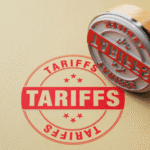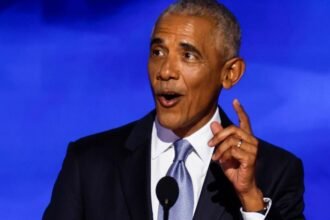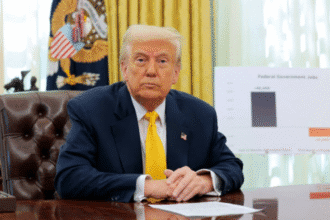Kamala Harris’s decision not to run for governor of California startled and simplified her political path. It also changed what Democrats expected right away. Many people thought Hillary would switch to California state politics after losing the 2024 presidential election to Donald Trump. Hillary had already served as both Attorney General and U.S. Senator in California. She was an obvious frontrunner because she was from California, but her recent announcement said otherwise.
- Is this part of a bigger plan for 2028?
- What does this mean for the politics in California?
- What Are Democrats Saying About the News?
- Could she still have a part to play in California’s future?
- What is at stake in the California election of 2026?
- What else could Harris do?
- Conclusion: A Planned Move for Long-Term Effects
Harris was clear and measured in a statement she released on social media. “I’ve thought long and hard about it, and I’ve decided not to run for Governor in this election.” My leadership and public service will not be in an elected role for now. Her statements slammed the door on this specific role, but they left the door open for future involvement, maybe on a bigger scale. Harris made it clear that she still wants to help people, but not as governor.
Is this part of a bigger plan for 2028?
The way and when the announcement was made make it seem like Kamala Harris doesn’t want to run for governor of California as part of a bigger political plan. A lot of people think Harris is getting ready to run for president in 2028. Her message didn’t rule out running for office again in the future, and it even hinted at new goals.
Harris said, “In the months to come, I will share more about my plans.” Because she is open to new alternatives, some are starting to think that her choice is not a withdrawal but a planned pause. She can stay involved in national politics and adapt to changes in the political landscape since she isn’t tied down to a long state-level campaign.
Also, not running in California means she won’t have to worry about losing in a big way, which might hurt her long-term political status. Instead, she keeps her national prominence, power, and ability to adapt—three things that are very important for anyone who wants to run for president in the future.
What does this mean for the politics in California?
People often say that California is a big player in politics and business. The state has a lot of power because it has around 40 million people living there and an economy that would be the fifth largest in the world if it were a country. Many of the choices made in Sacramento have effects all around the country, from rules about the environment and changes to schools to laws about housing and the high-tech industry.
With Kamala Harris not running for governor of California, the field for 2026 is wide open. Governor Gavin Newsom, who is also a Democrat, is finishing his second and last term. There will probably be a new group of Democratic leaders running to take his place, especially because the party is so powerful in state politics.
The Democratic primary in June 2026 will be the most important fight, since California’s political leanings mean that the general election will likely confirm the party’s choice. The struggle among up-and-coming Democrats gets even tougher without Harris. Without her, less well-known but qualified people can establish statewide platforms and interact with voters on important issues like public health, climate change, infrastructure, and housing affordability. Read another article on Arlington Controversy: Harris Responds
What Are Democrats Saying About the News?
Kamala Harris won’t run for governor of California, but she took the opportunity to talk about bigger issues with her party’s direction. Her statement had a message for Democrats all throughout the country that made them think about the past and the future. She said, “As we look ahead, we must be willing to pursue change through new methods and fresh thinking—committed to our same values and principles, but not bound by the same playbook.”
A lot of people at the party agreed with this part of her message. It shows that you know that essential Democratic values should stay the same, but techniques need to change. Voters now are more connected, aware, and worried about being real and being held accountable. Harris’s push for new ideas comes at the right time, especially since the party needs to rebuild after losing in 2024 and become ready for future elections.
Some people might perceive her choice to stay out of the contest for governor as a way to help her party. This would let new voices take center stage in California while she works on molding the national conversation and getting ready for what comes next.
Could she still have a part to play in California’s future?
Kamala Harris won’t run for governor of California, but she still has strong ties to her home state. Her impact on California politics will probably last for a long time. She might support candidates, give advice to campaigns, or even mentor new leaders who share her progressive views.
Harris can make a real difference in this kind of behind-the-scenes role without having to run the government full-time. She might also want to take part in state-level discussions about causes she has fought for on a national level, like women’s rights, environmental protection, and judicial reform.
Even while Harris isn’t on the ballot, she can still impact public opinion, especially among Democratic voters, and keep her political capital safe for when the right chance comes along.
What is at stake in the California election of 2026?
Now that Kamala Harris has decided not to run for governor of California, many are looking ahead. The incoming governor will have a lot of important problems to deal with. California is still dealing with problems, including high housing costs, income disparity, homelessness, problems with public schools, and climate-related issues like wildfires and water shortages.
Because Silicon Valley is in the state, data privacy, AI, and tech regulation will also be big topics in politics. The person who wins in 2026 will have to take on these duties, and every choice will have effects on the whole country.
Because California has so much power, the next governor might rapidly become a big player in national politics. In the past, many California governors have run for president. Harris has dropped out of the race, but the people who are still running will have to do so with the whole country watching.
What else could Harris do?
Harris might now be able to use her time outside of public government to make a bigger name for herself around the world. She can do a lot of things since she knows a lot about law, diplomacy, and policy. She may work for international think tanks, advocacy groups, or as a diplomat to change policy without being elected.
She might also work on forging coalitions inside the Democratic Party, helping young leaders grow, and helping to plan the 2028 election strategy. This way, she stays visible, relevant, and engaged with people without having to do the everyday tasks that come with being an elected official.
No matter what she does, it’s clear that Kamala Harris doesn’t want to run for governor of California. She is getting ready for the long term and for chances that fit her changing ambitions better.
Conclusion: A Planned Move for Long-Term Effects
In the end, Kamala Harris says she won’t run for governor of California, but this doesn’t mean she’s giving up on politics. Instead, it shows an intentional choice to stay adaptable, powerful, and future-focused. Harris isn’t departing; she’s just going to take part on her terms and timing.
As the fight for governor heats up in 2026 and the race for president becomes clearer in 2028, Harris’s influence, whether in the open or behind the scenes, will continue to alter the Democratic Party and American politics.
The message she sent forth wasn’t just about California. It was about the future of public service, leadership, and transformation. And with that, Kamala Harris has once again made herself a key voice for what will happen next.








